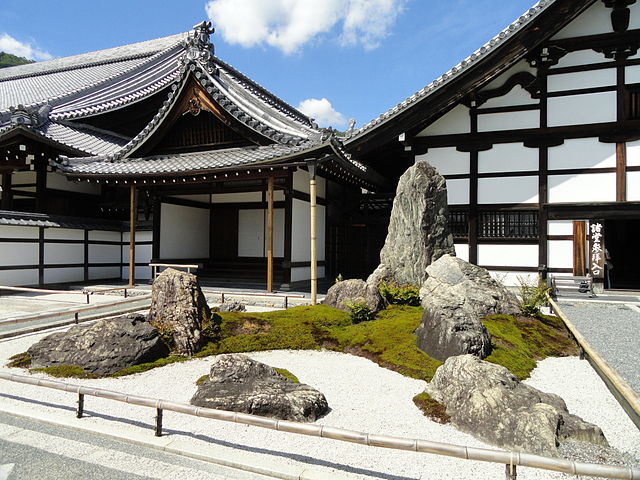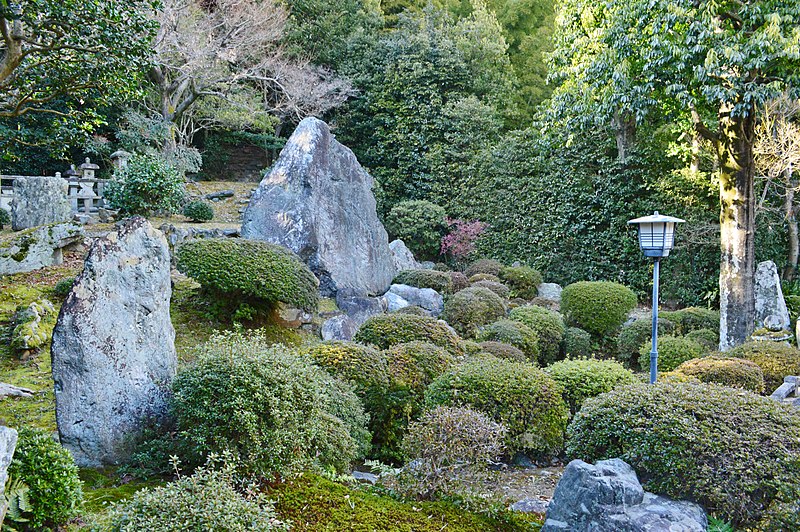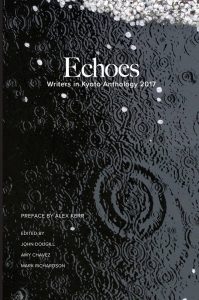A book review by John Dougill.
Stone gardens are an art form in themselves, different from other garden types and with distinctive features. As Stephen Mansfield shows in the early chapters of his book, the stone garden drew on diverse origins – animist use of sacred rocks and space; Chinese idealisations of nature; the Japanese preference for essentialism and representation; Daoist notions of the flow of energy; and bonseki, the setting of stones on trays.

The first mention of dry landscape came in the 11th century in Sakuteiki, and a significant breakthrough was made by Muso Soseki, founder of Tenryu-ji, who developed the idea of the contemplative garden meant for entering visually rather than physically. Though not mentioned by Mansfield, the creation by Soseki of the dry garden at Saiho-ji, famous for its moss, offers an early example of a rock garden with mountain river scenery and a large flat stone on which the designer sat in contemplation of the scene below.
In terms of aesthetics, Mansfield runs through the usual suspects – mujo (impermanence), yugen (elegant profundity), mitate (creative reuse), wabi-sabi (rustic simplicity) and yohaku no bi (literally, the beauty of extra white, i.e. empty space). The latter is a key concept, though perhaps the least known about.
The concept of a specifically ‘Zen garden’ is said by Mansfield to have originated in the West with Lorraine Kuck’s 1935 book, One Hundred Kyoto Gardens. Interestingly, it came out at around the time of the ‘discovery’ of Ryoan-ji as a masterpiece. Like the tea ceremony, also heavily influenced by
Zen, the stone garden has developed an independent status and now extends far beyond Zen temples. In the final section of the book, the author lists 15 outstanding examples of the art form, only 6 of which are within the domain of Kyoto’s Rinzai Zen. One of them indeed is in the Canadian Embassy!

Mansfield has evidently given much thought to the subject, and he leaves the reader with much to ponder. ‘One of the functions of the gardens is to bring us into alignment with nature, the universe, our inner selves,’ he writes. There are numerous tips for helping us see more clearly the art involved, and for those of us in Kyoto there is the recommendation to get away from the crowds and go see Shogen-ji in Otsu. On the other hand, considerable space is given to the Shigemori Mirei creations at Matsuo Taisha shrine, which for anyone familiar with his work at Tofuku-ji must surely be a disappointment.
The book provides much food for thought, and and I found myself sufficiently stimulated to want to ask further questions. What is involved in the hira-niwa device? How did the aesthetic of yohaku no bi develop and what does it involve? Why no discussion of the Mt Horai garden with its crane and turtle features? Why no mention of the third Shigemori garden at Matsuo Taisha or the West Garden at Tofuku-ji? What underlies the Daoist insistence on odd numbers? What are the best examples of stone gardens outside Japan?
How fortunate then that there will be a chance to put such questions directly to the author himself when he comes for a lunch talk with WiK on Sept 28th (members have priority). Stephen Mansfield is a prolific author and an influential photo-journalist whose work has appeared in some 60 different publications and who regularly reviews for the Japan Times. He’s recognised as one of the best contemporary writers on Japanese culture and apart from gardens he has written books on Tokyo and the Insight Guide to Japan. We’re very pleased therefore that he has agreed to take time out from his writing activities to come and talk to WiK.
For a full listing of Stephen Mansfield’s books, and details about the lunch on Sept 28, please take a look at https://archived.writersinkyoto.com/2019/05/sept-28-lunch-with-stephen-mansfield/.
For an overview of gardens in Japan by Stephen Mansfield, see his article in the Japan Times.






Recent Comments